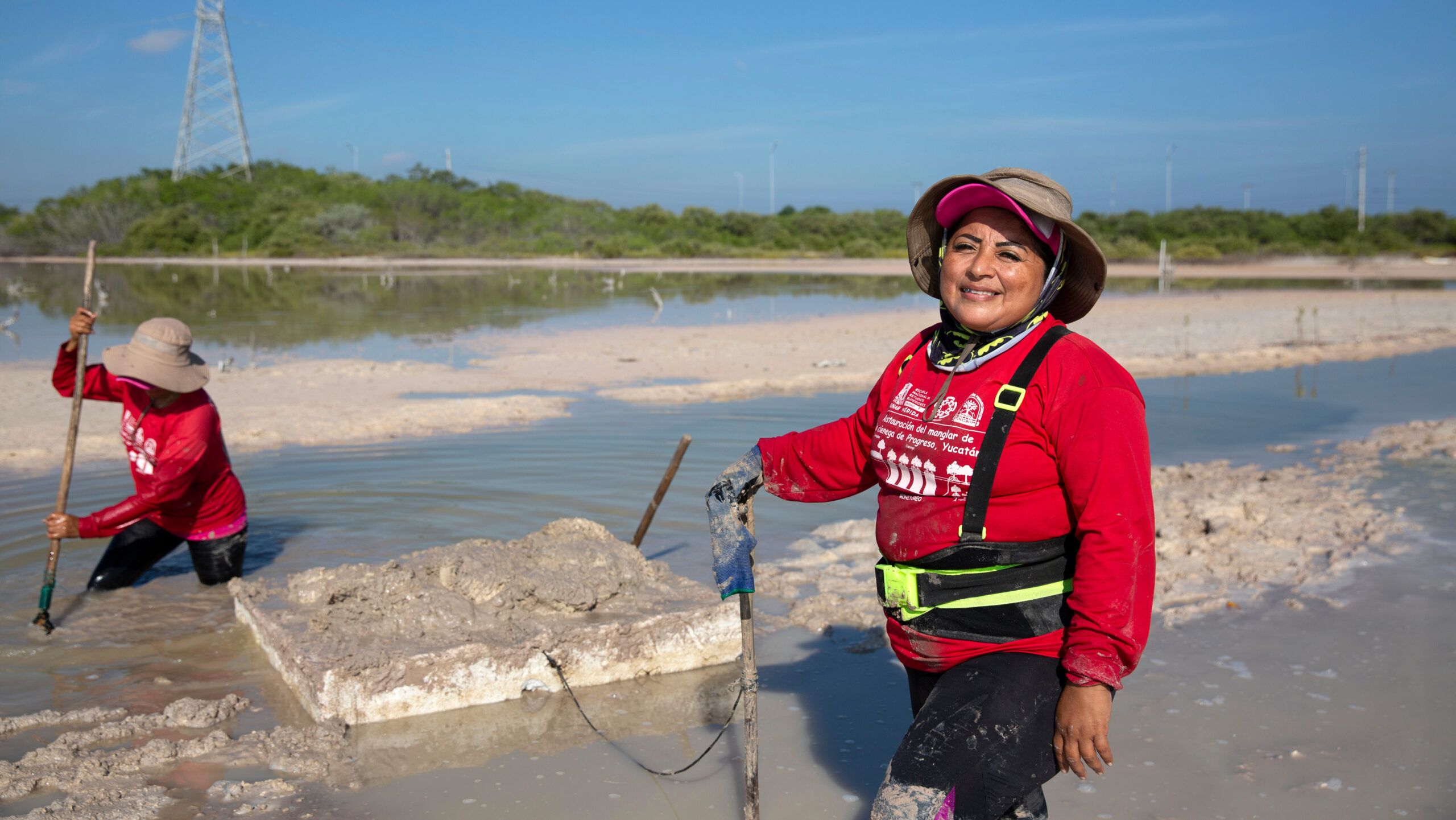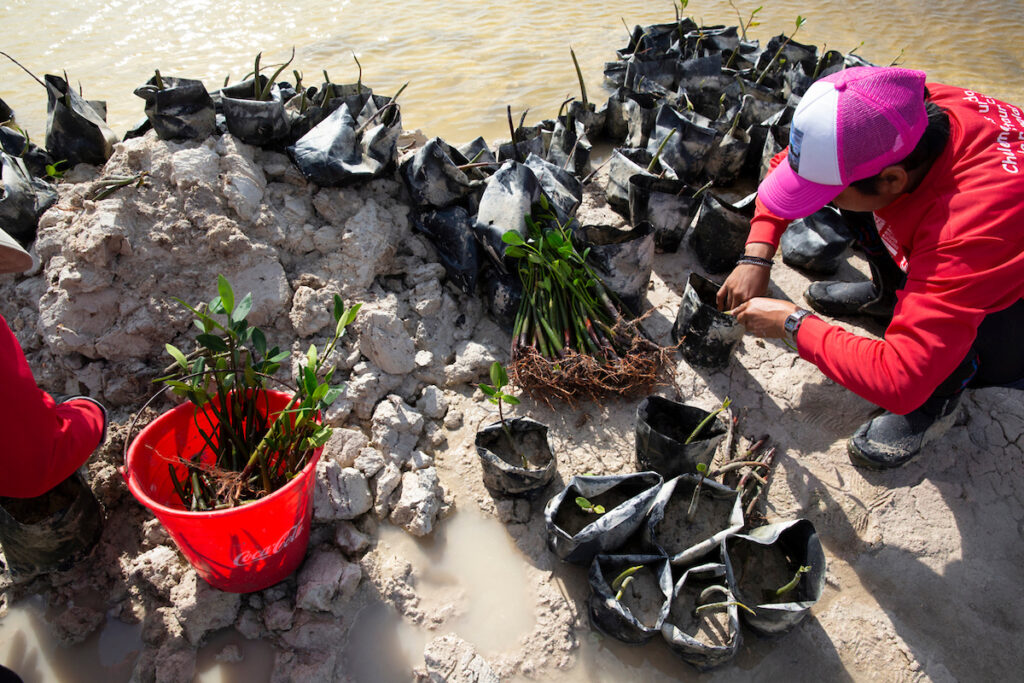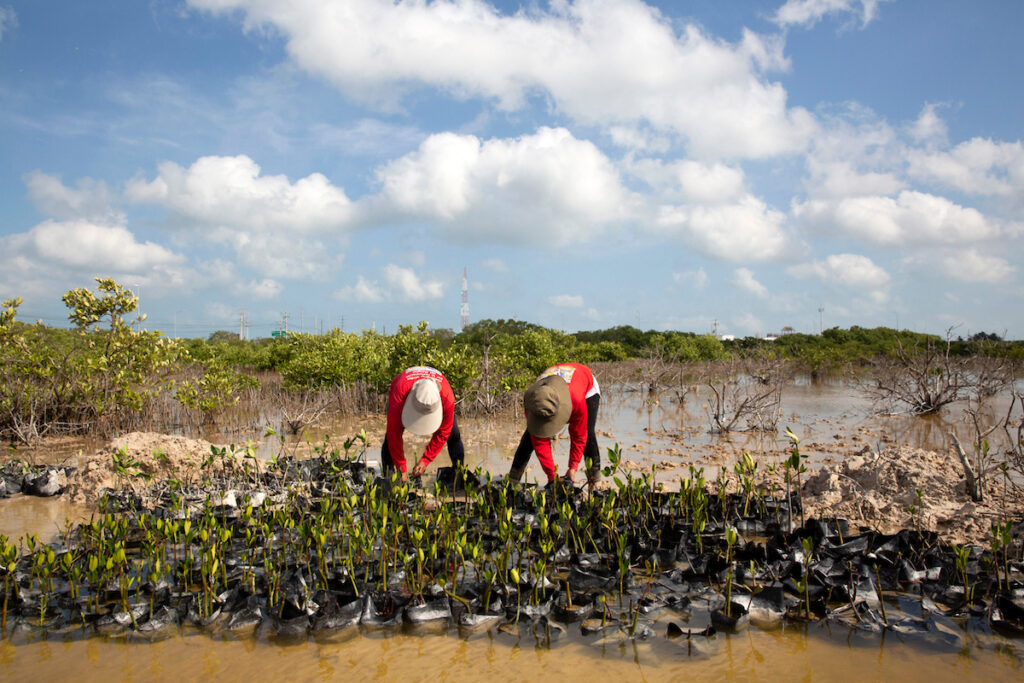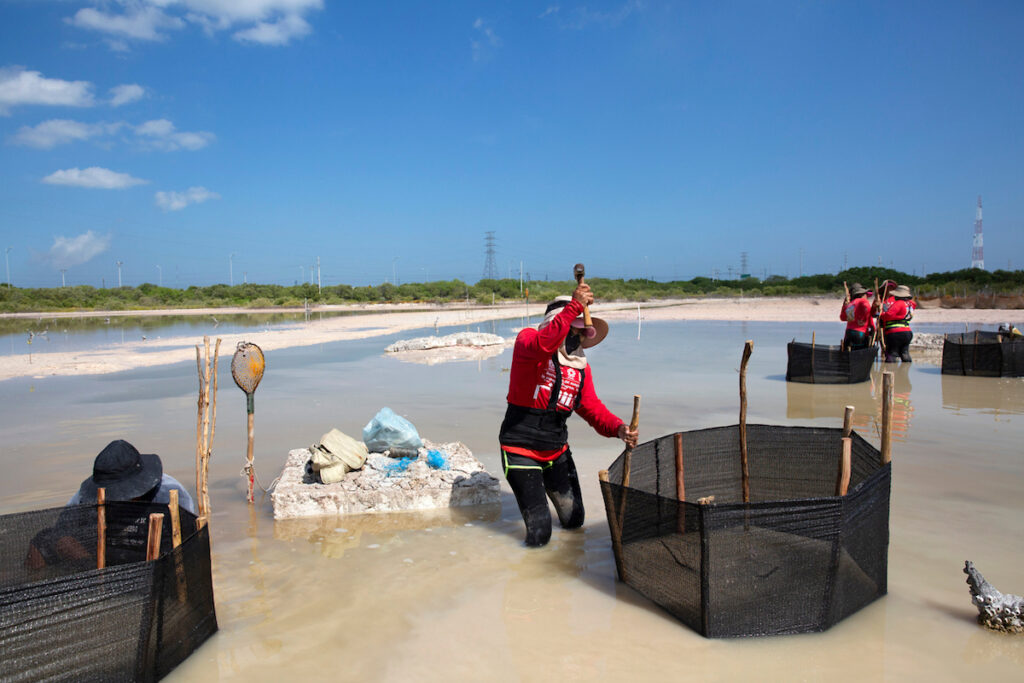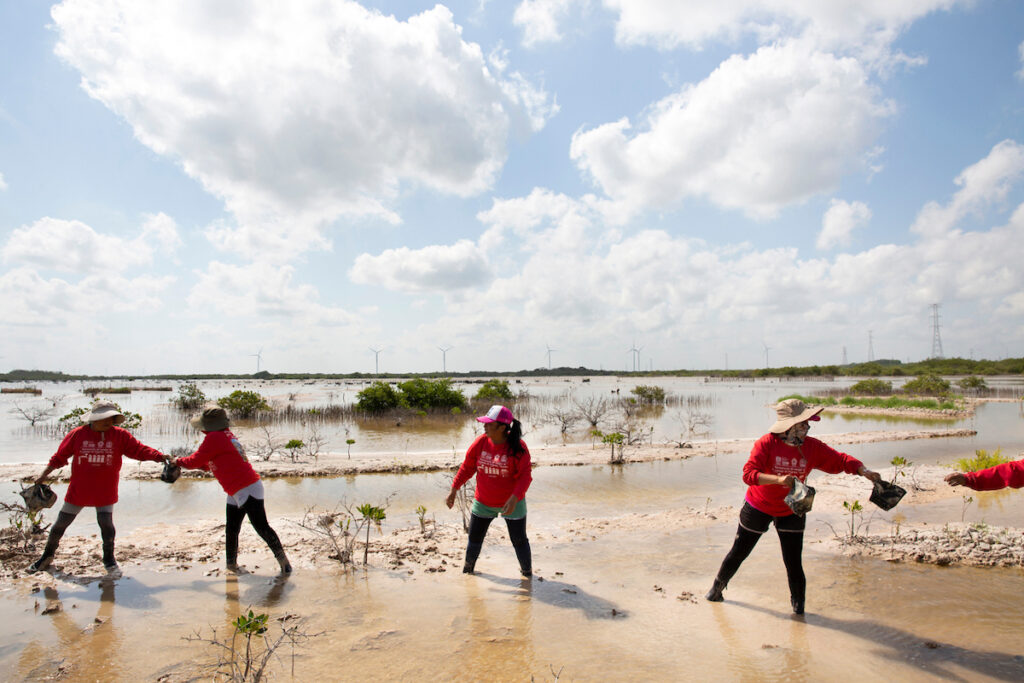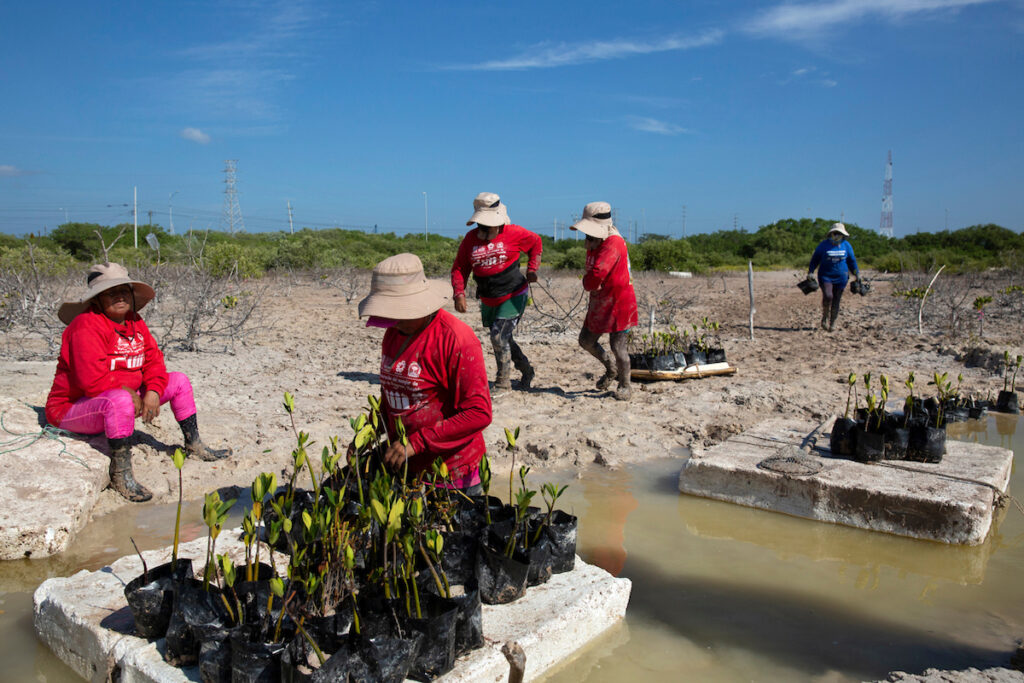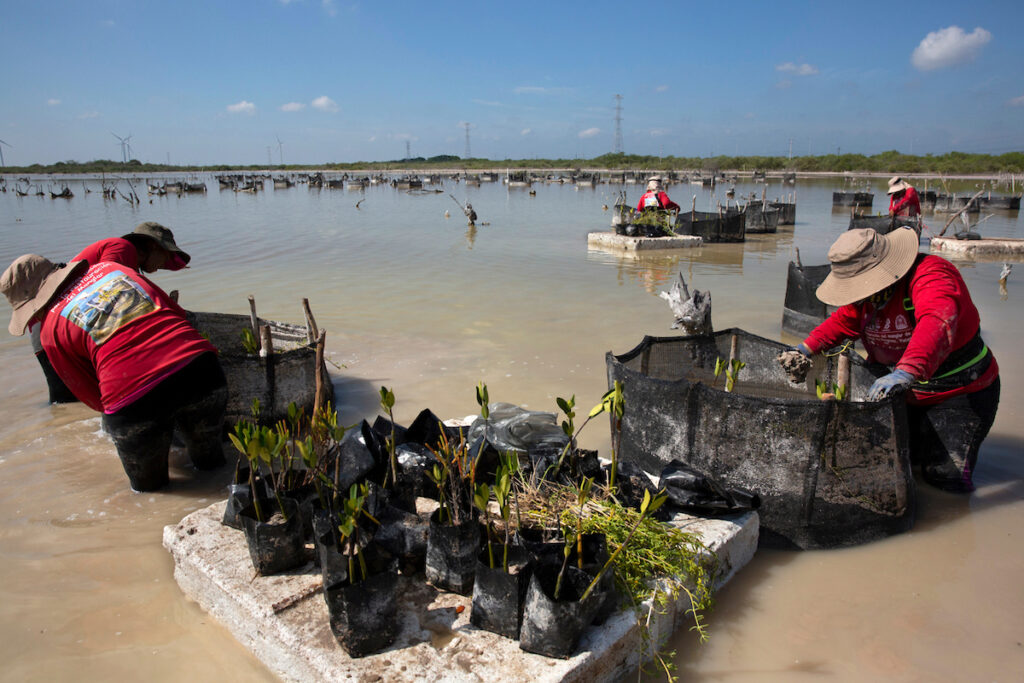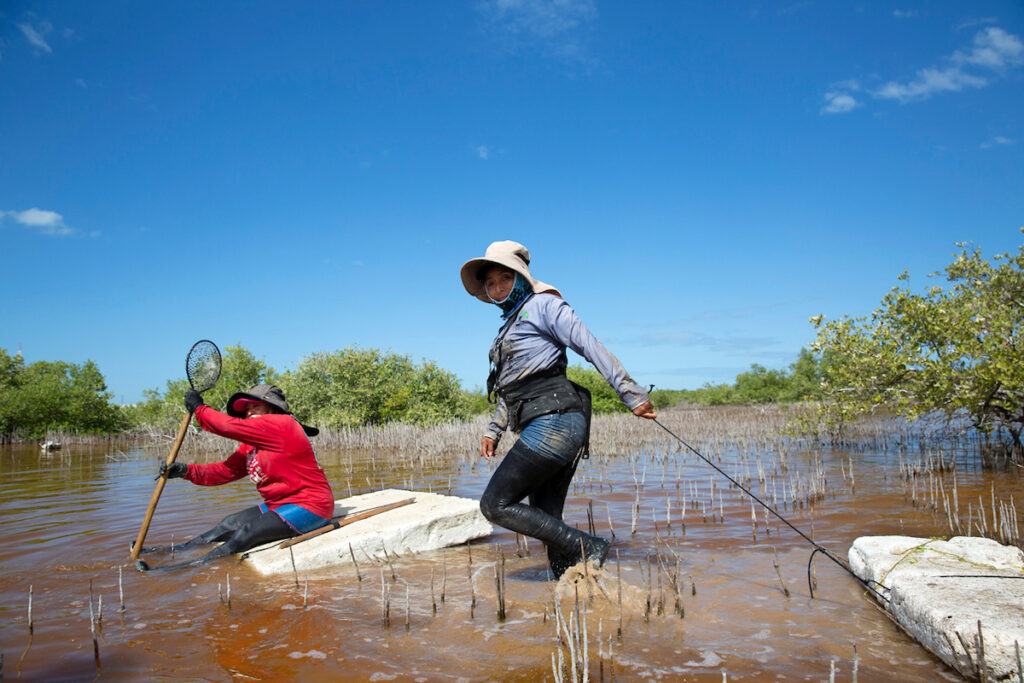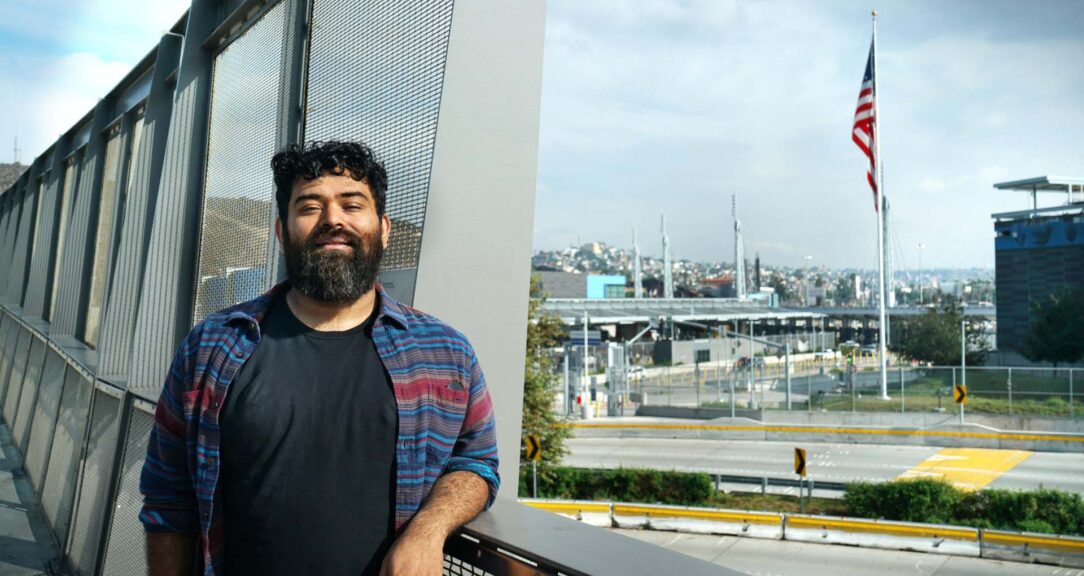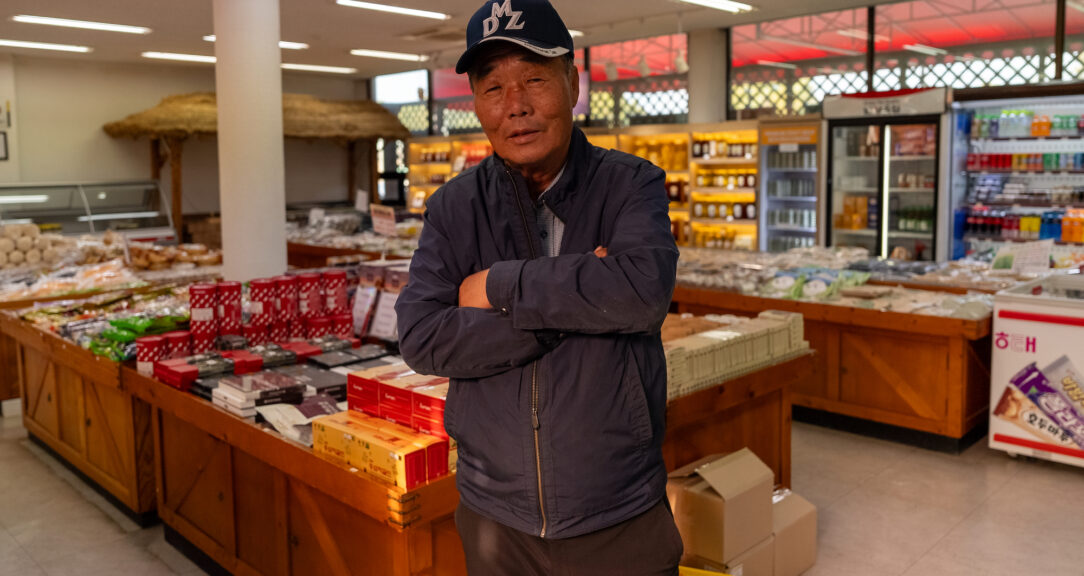Covered by improvised protective gear and surrounded by murky marshland, 43-year-old Keila Vázquez Lira sculls a small flat-bottomed boat towards mangrove nurseries like a Venetian gondolier, hoping to restore a crucial ecosystem destroyed by urban development.
An extra hat under her sombrero shields her from scorching heat, while wetsuit cuttings insulate her from the waist down when she submerges for several hours. Schools of colorful fish dart through the roots of a mangrove seedling Vázquez planted a year ago.
The seedling is a sign her dedicated restoration work is finally paying dividends. Even so, a busy highway nearby leads to construction sites where expensive hotels and other real estate are being built over mangrove forests bordering her fishing village of Chelem in Yucatán, Mexico.
Vázquez is the leader of Las Chelemeras, an all-woman indigenous conservation group responsible for restoring the ecosystems of an area about the size of 120 soccer fields. Today, they are áak’alche’ balam — guardians of the mangrove wetlands in the Mayan language — tirelessly tending to these high-carbon-storage trees that support life and play a crucial role in the fight against climate change.
“It is a great feeling to see the seedlings grow a little every day,” says Vázquez, a mother of three, who believes her work resembles nurturing children. “We treat our saplings the same, and it is extremely satisfying to see our babies grow up in a safe environment with perfect conditions to flourish.”
Mangroves save lives
A 2022 scientific study by Frontiers in Marine Science found mangroves store up to five times as much organic carbon as tropical upland forests, making them pivotal to slowing global warming. According to the Global Mangrove Alliance (GMA), mangroves “support the livelihoods, food security and well-being of hundreds of millions of people, are critical for carbon storage, regulate water quality and protect coasts.” Yet as much as 35% of mangroves have been degraded or lost over the last 50 years. About 80% of mangrove restoration projects fail because of a lack of community involvement, the GMA says, making Las Chelemeras an even greater success story. UNESCO has recognized their work.
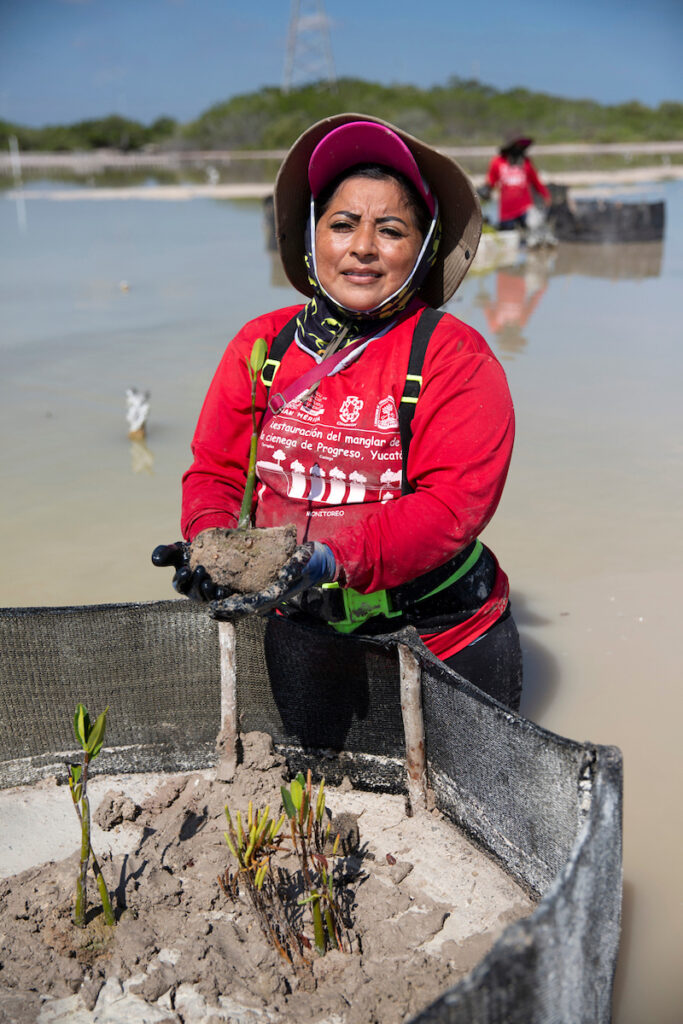
Mexico has the fourth largest mangrove ecosystem, representing 6% of the world’s total, according to the National Commission for the Knowledge and Use of Biodiversity (CONABIO). More than 60% of those trees exist along the Yucatán Peninsula coastline, but more than 40,000 hectares are estimated to have been destroyed here, leaving seaside communities at risk of hurricanes. Mangroves form natural barriers against storms.
“Some of Las Chelemeras had their houses damaged or destroyed by severe storms,” Vázquez says. “We feel we have no choice but to restore this special biosphere that can save us from the worst effects of hurricanes.”
For nearly 15 years, Las Chelemeras have dug countless miles of canals into hard ground with simple spades, connecting lagoons to desert wastelands caused by irregularly disposed construction material. Working five hours per day, six days per week, under the unforgiving Yucatán sun or curtains of wet-season rain, caring for mangrove seedlings is the relatively easy part. Most of the work involves shifting sediment from one place to another. Several Chelemeras spend many hours constructing each nursery, known as tarquinas.
The hexagonal enclosures allow water to flow in but prevent seedlings from washing away. Six sticks are hammered into the ground and surrounded by hand-woven mesh netting. Then mud is poured inside until the ground is a few centimeters above the waterline.
“The work gives us more upper-body strength,” says Vázquez with a coy smile — before admitting the weeks of labor give her back and shoulder pain in the evenings.
Women united
In 2010, the Mexican government launched a publicly funded reforestation project to reverse the extensive destruction of the mangroves. Originally, the government offered the jobs to local fishermen, but the men balked at the pay: 60 pesos, or about $3.60 per day.
“My husband and the other men said the salary was not worthwhile for the labor involved,” Vázquez says.
Fortunately, she and four other women had accompanied their husbands to a meeting about the project. They asked the officials whether the job was exclusively for men. It was “no job for women,” they were warned, but Vázquez and her friends — who didn’t have any prior experience in reforestation work — believed they could do it.
“It was wonderful to see these women stay and, despite the modest wages, they felt determined to work no matter what,” she says. “We knew the wage was low but agreed it would at least be enough to buy black beans for soup and maize for tortillas.”
According to U.N. Women, 42.4% of women in Mexico live in poverty. Two years into the five-year project, the government changed and the compensation package was cut short. Las Chelemeras scrambled for alternative solutions to keep the project running. Since 2012, they have mostly relied on sporadic international private funding from limited sponsors.
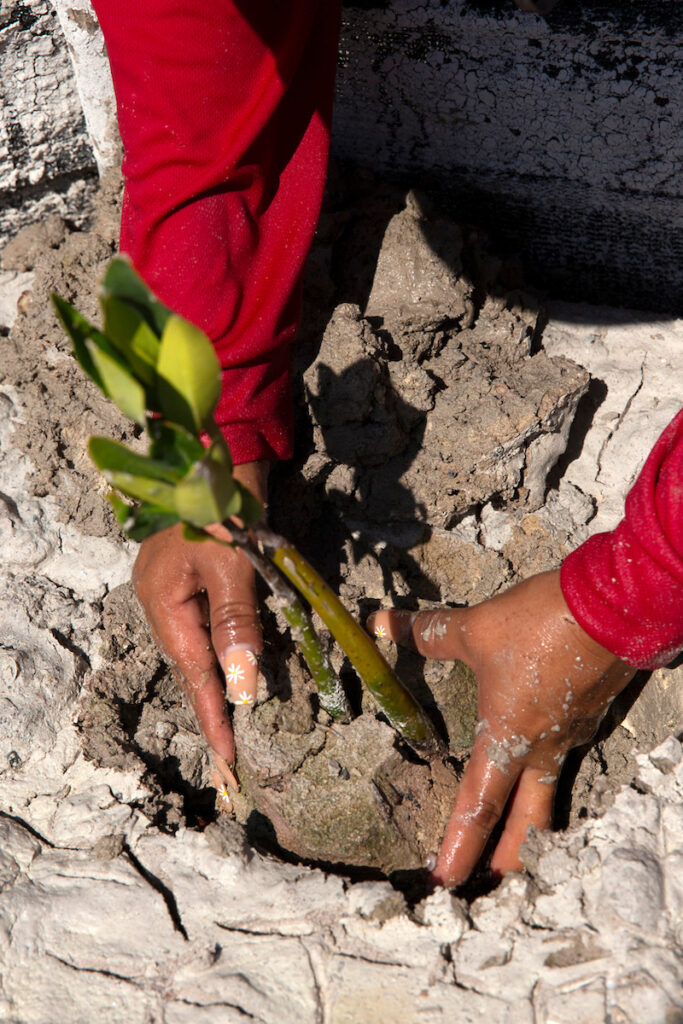
“Sadly, we receive more international interest than from our nation,” says Vázquez, who shares any remaining money equally among her colleagues after purchasing essential supplies. “Our sponsors ask us what we need and how much it costs, and whatever extra they donate, our wages come from there. It is not always stable.”
Nevertheless, she feels empowered by the innovative and cost-cutting, yet effective solutions Las Chelemeras have found. The scientists running the project have praised the group for its creative problem-solving.
“In these 12 years, they have become extremely knowledgeable about the scientific component, which they combine with their local knowledge to become the perfect people to run the program, which should be the final objective,” says project founder and biologist Dr. Jorje Herrera. “The only sad part is that they have not received recognition from the government for their hard work for over a decade. These women have broken all barriers and shown they can be the family breadwinners through hard manual labor.”
Smashing stereotypes
Before becoming a frontline mangrove restoration worker, Vázquez lived like many of the other Chelemeras. Her role was limited to the household, caring for her children and completing repetitive chores. Now, she says manual labor gives her the courage to take financial responsibility for the family and have a voice in her community. She says the fight for equality has changed perspectives in her village and has inspired the creation of other all-female groups working to restore mangroves around the country.
“There are not just Las Chelemeras involved; there are entire families and associated friends who are part of our immediate circle of influence,” Vázquez says. “Together, we have impacted our community, where many people now take it into their own hands to protect our mangroves. We have also influenced others to form new mangrove restoration groups in neighboring towns, which is a real honor.”
She says there needs to be a balance between urban development and sustainable restoration projects that involve local communities and provide long-term employment. Such a practice would spread awareness, provide education and give people dignity in rural areas like Chelem.
“People tell us we live in paradise, yet the government needs to be more environmentally friendly for this to remain so,” she adds.
One of her main priorities is teaching her children about the vital role mangroves play in the ecosystem and how they are central to life in Chelem. She speaks with pride when describing one of her daughters, Sharty, who dreams about becoming a biologist after taking inspiration from her mother.
“I have brought all my children to work so they can see with their own eyes what we do to restore the unique environment of the wetlands,” Vázquez says. “I tell them how fulfilling the job is, and they say they are proud of me. They are very curious, so they ask me how the mangroves grow and what kind of animals I see in the swamp. I tell them that the trees I plant will still be here when I am gone, that is, if they take care of them. I want all our children to look upon the fully grown mangroves in the future as living memories of their mothers.”
Read more
Sign up to keep up to date with ReThink Q.
